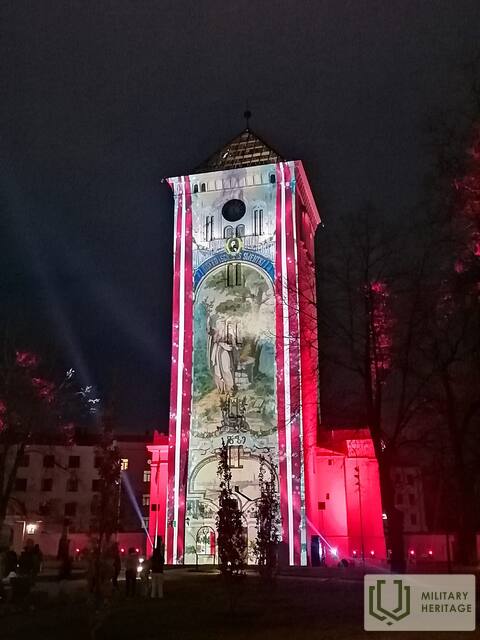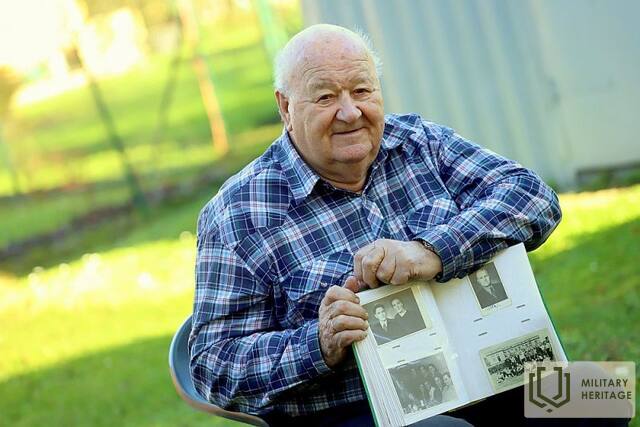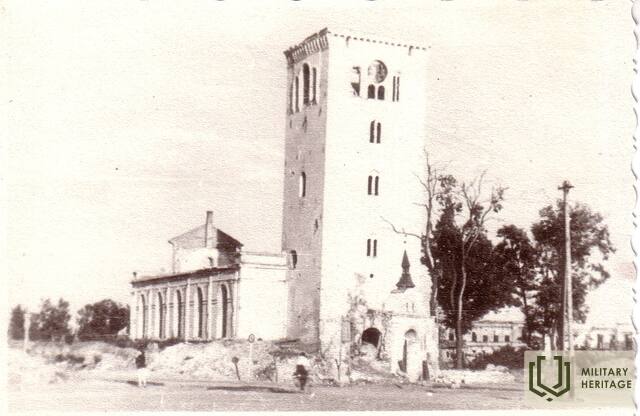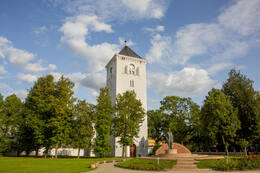The tower of the Holy Trinity Church in Jelgava at Akadēmijas Street 1, where Egons Užkurelis and Jānis Ģēģeris hoisted a homemade Latvian flag in 1952
On October 12, 1952, Egons Užkurelis, who was only 14 years old at the time, together with his friend Jānis Ģēģeris, who was a year older, hung a homemade Latvian national flag on the tower of the Holy Trinity Church in Jelgava, which was destroyed in the Soviet-German war in July-August 1944.
This date was chosen because it was a Sunday, when the Jelgava motorcycle championship was held in Pārlielupe, where many people gathered and from there the church tower could be clearly seen. The flag was made from a bed sheet, painted with watercolors. The way it was made later allowed the Chekists to guess that the flag raisers should be sought among the students.
E. Užkurelis and J. Ģēģeri were arrested on October 23, 1952, followed by interrogation in Jelgava and at the Ministry of State Security of the Latvian SSR in Riga at the Corner House. The Criminal Court of the Riga Regional Court accused E. Užkurelis and J. Ģēģeri of anti-Soviet propaganda and agitation and participation in a counter-revolutionary organization. On January 10, 1953, E. Užkurelis was sentenced to five years in prison, and J. Ģēģeris to 15 years. E. Užkurelis was detained in Riga Central Prison for seven months until April 12, 1953, when he was released on the basis of an amnesty.
V. Sprūde. “I know who raised the flag!” Egons Užkurelis remembers the historical event in his teenage years // Mājas Viesis, 2021, November 18. https://www.la.lv/zinu-kas-karogu-uzvilka
Related timeline
Related objects
The Tower of Jelgava Holy Trinity Church
The Tower of Jelgava Holy Trinity Church is located in the centre of the city of Jelgava.
The history of the tower spans more than four centuries, becoming an important witness to the development of the city, as well as tragic events. The church was built in 1574 on the orders of the Duke of Courland and Semigallia, Gotthard Kettler, and its tower, completed in 1688 under the lead of the construction master Martin Knoch, became one of the most prominent structures of the city.
During the Second World War, Jelgava was severely destroyed and, in 1944, the church burnt down after a Soviet air raid. After the war, the Soviet authorities blew up the altar part of the church and demolished the walls. Only the tower was preserved as a strategic object, as it was the highest point in the city. During and after the war, the tower was used for military purposes. Enemy positions were observed and the surroundings were controlled from the tower.
During the post-war years, the tower also served as a strategic point for resistance activities. It became a secret meeting place and a base for the transfer of information that was essential for the fight against the Soviet regime. The tower, while retaining its historical significance, has been reborn today as a cultural and educational centre.








